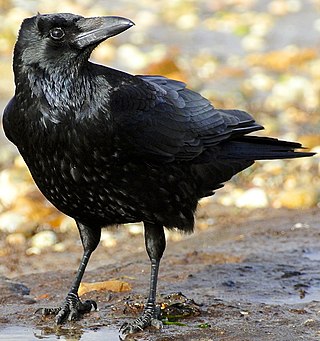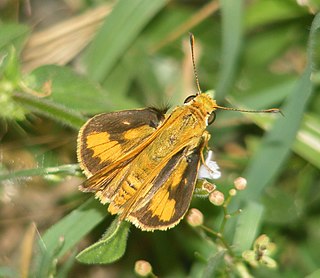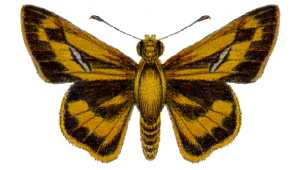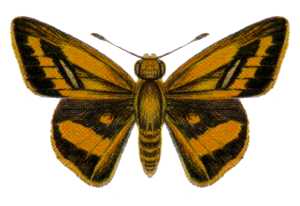
Southeast Asia is the geographical south-eastern region of Asia, consisting of the regions that are situated south of China, east of the Indian subcontinent, and north-west of mainland Australia which is part of Oceania. Southeast Asia is bordered to the north by East Asia, to the west by South Asia and the Bay of Bengal, to the east by Oceania and the Pacific Ocean, and to the south by Australia and the Indian Ocean. Apart from the British Indian Ocean Territory and two out of 26 atolls of Maldives in South Asia, Maritime Southeast Asia is the only other subregion of Asia that lies partly within the Southern Hemisphere. Mainland Southeast Asia is entirely in the Northern Hemisphere. East Timor and the southern portion of Indonesia are the parts of Southeast Asia that lie south of the Equator.

The Battle of Leyte Gulf was the largest naval battle of World War II and by some criteria the largest naval battle in history, with over 200,000 naval personnel involved. It was fought in waters near the Philippine islands of Leyte, Samar, and Luzon from 23 to 26 October 1944 between combined American, Australian and Filipino forces and the Imperial Japanese Navy (IJN), as part of the invasion of Leyte, which aimed to isolate Japan from the colonies that it had occupied in Southeast Asia, a vital source of industrial and oil supplies.

Pinctada is a genus of saltwater oysters, marine bivalve mollusks in the family Pteriidae. These pearl oysters have a strong inner shell layer composed of nacre, also known as "mother of pearl".

A crow is a bird of the genus Corvus, or more broadly a synonym for all of Corvus. The word "crow" is used as part of the common name of many species. The related term "raven" is not linked scientifically to any certain trait, but is rather a general grouping for larger species of Corvus.

Typhonium is a genus in the family Araceae native to eastern and southern Asia, New Guinea, and Australia. It is most often found growing in wooded areas.
- Typhonium acetosellaGagnep. - Cambodia, Laos, Thailand, Vietnam
- Typhonium adnatumHett. & Sookch. - Thailand
- Typhonium albidinerviumC.Z.Tang & H.Li - Guangdong, Hainan, Laos, Thailand
- Typhonium albispathumBogner - Thailand
- Typhonium alismifoliumF.Muell. - Queensland, Northern Territory
- Typhonium angustilobumF.Muell. - Queensland, New Guinea
- Typhonium bachmaenseV.D.Nguyen & Hett. - Vietnam
- Typhonium baoshanenseZ.L.Dao & H.Li - Yunnan
- Typhonium blumeiNicolson & Sivad. - Japan, Taiwan, Ryukyu Islands, much of China, Bangladesh, Laos, Cambodia, Myanmar, Thailand, Vietnam; naturalized in Madagascar, Mauritius, Comoros, Borneo, Philippines, West Indies
- Typhonium bognerianumJ.Murata & Sookch. - Thailand
- Typhonium browniiSchott - Queensland, New South Wales
- Typhonium bulbiferumDalzell - southern India
- Typhonium circinnatumHett. & J.Mood - Vietnam
- Typhonium cochleareA.Hay - Northern Territory of Australia
- Typhonium cordifoliumS.Y.Hu - Thailand
- Typhonium digitatumHett. & Sookch. - Thailand
- Typhonium echinulatumHett. & Sookch. - Thailand
- Typhonium eliosurum(F.Muell. ex Benth.) O.D.Evans - New South Wales
- Typhonium filiformeRidl. - Thailand, Malaysia
- Typhonium flagelliforme(G.Lodd.) Blume - Guangdong, Guangxi, Yunnan, Bangladesh, Bhutan, Cambodia, India, Indonesia, Laos, Malaysia, Myanmar, Philippines, Singapore, Sri Lanka, Thailand, New Guinea, Queensland, Northern Territory
- Typhonium fultumRidl. - Thailand, Malaysia
- Typhonium gagnepainiiJ.Murata & Sookch. - Thailand, Cambodia
- Typhonium gallowayiHett. & Sookch. - Thailand
- Typhonium glaucumHett. & Sookch. - Thailand
- Typhonium griseumHett. & Sookch. - Thailand
- Typhonium hayataeSriboonma & J.Murata - Vietnam
- Typhonium huenseNguyen & Croat - Vietnam
- Typhonium hunanenseH.Li & Z.Q.Liu - Hunan
- Typhonium inopinatumPrain - India, Myanmar, Thailand
- Typhonium jinpingenseZ.L.Wang, H.Li & F.H.Bian - Yunnan
- Typhonium johnsonianumA.Hay & S.M.Taylor - Northern Territory of Australia
- Typhonium jonesiiA.Hay - Northern Territory of Australia
- Typhonium laoticumGagnep. - Thailand, Laos
- Typhonium liliifoliumF.Muell. ex Schott - Northern Territory, Western Australia
- Typhonium lineareHett. & V.D.Nguyen - Vietnam
- Typhonium listeriPrain - Assam, Bangladesh, Myanmar
- Typhonium medusaeHett. & Sookch. - Thailand
- Typhonium mirabile(A.Hay) A.Hay - Melville Island of Australia
- Typhonium neogracileJ.Murata - Assam, Bangladesh, Myanmar
- Typhonium nudibaccatumA.Hay - Western Australia
- Typhonium orbifoliumHett. & Sookch. - Thailand
- Typhonium pedatisectumGage - Myanmar
- Typhonium pedunculatumHett. & Sookch. - Thailand
- Typhonium peltandroidesA.Hay, M.D.Barrett & R.L.Barrett - Western Australia
- Typhonium penicillatumV.D.Nguyen & Hett. - Vietnam
- Typhonium pottingeriPrain - Myanmar
- Typhonium praecoxJ.Murata - Myanmar
- Typhonium praetermissumA.Hay - Northern Territory of Australia
- Typhonium pusillumSookch., V.D.Nguyen & Hett. - Thailand
- Typhonium reflexumHett. & Sookch. - Thailand
- Typhonium roxburghiiSchott - Taiwan, Yunnan, Bonin Islands, India, Bangladesh, Sri Lanka, Andaman Islands, Thailand, Malaysia, western Indonesia, Philippines, New Guinea; naturalized in Western Australia, eastern Brazil, Tanzania
- Typhonium russell-smithiiA.Hay - Northern Territory of Australia
- Typhonium sagittariifoliumGagnep. - Thailand
- Typhonium saraburiensisSookch., Hett. & J.Murata - Thailand
- Typhonium sinhabaedyaeHett. & A.Galloway - Thailand
- Typhonium smitinandiiSookch. & J.Murata - Thailand
- Typhonium stigmatilobatumV.D.Nguyen - Vietnam
- Typhonium subglobosumHett. & Sookch. - Thailand
- Typhonium tayloriiA.Hay - Northern Territory of Australia
- Typhonium trifoliatumF.T.Wang & H.S.Lo ex H.Li, Y.Shiao & S.L.Tseng - Mongolia, Hebei, Inner Mongolia, Shaanxi, Shanxi
- Typhonium trilobatum(L.) Schott - southern China, Indian Subcontinent, Indochina; naturalized in Windward Islands, Ivory Coast, Borneo, Philippines
- Typhonium tubispathumHett. & A.Galloway - Thailand
- Typhonium variansHett. & Sookch. - Thailand
- Typhonium vermiformeV.D.Nguyen & Croat - Vietnam
- Typhonium violifoliumGagnep. - Myanmar, Thailand
- Typhonium watanabeiJ.Murata, Sookch. & Hett. - Thailand
- Typhonium weipanumA.Hay - Queensland
- Typhonium wilbertiiA.Hay - Queensland

Telicota ancilla, the dark palm dart, is a butterfly belonging to the family Hesperiidae. These species form a complex and exact species identity can only be determined by examination of the genitalia.

Telicota colon, commonly known as the pale palm dart or common palm dart, is a species of butterfly in the family Hesperiidae. It is found from India to Australia.

Telicota is a genus of grass skipper butterflies in the family Hesperiidae. It is a tropical Asian genus, shared between the Indomalayan realm and the Australasian realm, and ranging from Sri Lanka to Australia and New Guinea. Larval foodplants include Palmae and Gramineae - Miscanthus sinensis, Pennisetum purpureum, Oryza sativa (rice), Saccharum officinarum, Imperata cylindrica, Cocos nucifera (coconut) and Calamus (rattan).

Telicota brachydesma, the small darter, is a butterfly of the family Hesperiidae. It is found in Australia, the Aru Islands, Papua Province and Papua New Guinea.
Telicota eurotas, the sedge darter, is a butterfly of the family Hesperiidae. It is found in Australia, the Aru Islands, Irian Jaya, Maluku and Papua New Guinea.

Telicota eurychlora, the dingy darter, is a butterfly of the family Hesperiidae. It is found in Australia along the south-eastern coast of New South Wales and the north-eastern coast of Queensland.

Telicota mesoptis, also known as the narrow-brand darter, is a butterfly of the family Hesperiidae. It is found in Australia, the Aru Islands, Irian Jaya, the Kei Islands and Papua New Guinea.

Telicota ohara, the northern large darter, is a butterfly of the family Hesperiidae. It is found in the Oriental and Australian Regions, but not on the Pacific islands.

Cephrenes trichopepla, the yellow palm dart, is a butterfly of the family Hesperiidae. It is found in Australia, Papua and Papua New Guinea. It has recently been recorded from Singapore and Sri Lanka.

Telicota bambusae, the dark palm dart, is a species of grass skipper butterfly in the family Hesperiidae. It is found in India, Sri Lanka and on Peninsular Malaysia.
This page is based on this
Wikipedia article Text is available under the
CC BY-SA 4.0 license; additional terms may apply.
Images, videos and audio are available under their respective licenses.














